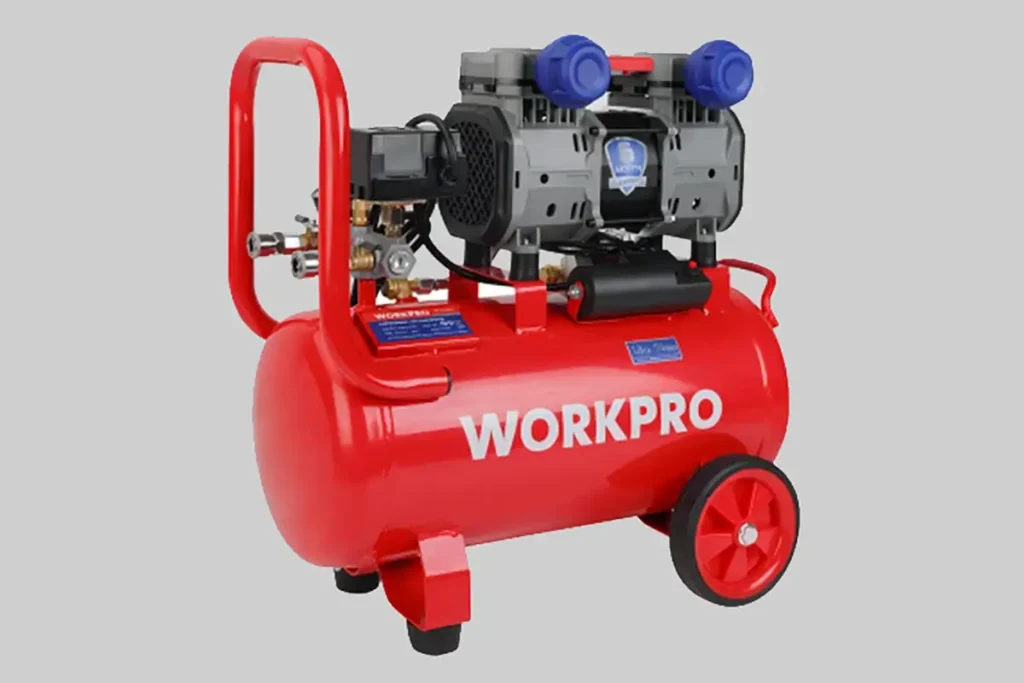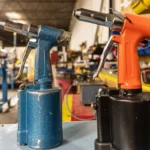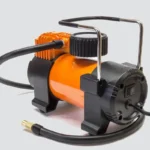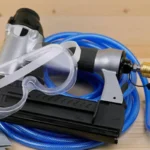Winter is coming, and while we might be excited for snowball fights and cozy fires, your air compressor might not share the same enthusiasm. Cold weather can be harsh on your equipment, leading to inefficiencies and potential damage.
Let’s learn how you can keep your air compressor in tip-top shape through the winter months.
Step-by-Step Guide

Check for Leaks
Inspect Air Lines and Fittings: The first step is to give your compressor a thorough once-over. Leaks can become more problematic in colder weather. Grab a soapy water solution and spray it around connections and fittings. Bubbles mean leaks, and leaks mean trouble. Fix them up before they turn into a bigger issue.
Drain the Tank
Remove Moisture: Draining your tank regularly is crucial. Water inside your tank can freeze and cause serious damage. Turn off your compressor, open the drain valve, and let all the moisture out. Do this after every use, especially in the winter.
Change the Oil
Use Winter-Grade Lubricant: Just like your car, your compressor needs an oil change too. Swap out the regular oil for a winter-grade lubricant. This helps maintain the compressor’s performance when temperatures drop. Your compressor will thank you with smoother operation.
Insulate and Heat
Protect the Unit: Your compressor doesn’t like the cold any more than you do. Insulating the unit can help maintain a stable temperature. You can use insulating wraps or even an old blanket. For extra protection, consider heating tape for the hoses and fittings.
Use Synthetic Lubricants
Advantages in Cold Climates: Synthetic lubricants are designed to perform better in extreme temperatures. They don’t thicken as much in the cold, ensuring your compressor runs smoothly.
Install a Cold-Start Kit
Ease of Start-Up: Cold-start kits are a lifesaver in freezing conditions. They make it easier for your compressor to start up, reducing wear and tear. It’s a small investment that can save you a lot of headaches.
Protect the Air Intake
Prevent Blockages: Snow and ice can block your air intake, causing your compressor to struggle. Use a cover or build a simple shelter to keep the intake clear. Think of it as a cozy winter hat for your compressor.
Regular Maintenance
Continuous Monitoring: Keep an eye on your compressor throughout the winter. Regularly check for any signs of wear, ice buildup, or damage. A little attention now can prevent major problems later.
Additional Tips
- Store in a Controlled Environment: If you can, keep your compressor in a heated or insulated space. This is the best way to protect it from the elements.
- Use a Dehumidifier: Reduce moisture in the storage area to prevent internal freezing. Less moisture means less chance of ice forming inside your compressor.
- Check Belts and Hoses: Inspect all belts and hoses for signs of wear. Cold weather can make them brittle, so replace any that look damaged.
Common Mistakes to Avoid
- Ignoring Moisture: Forgetting to drain the tank can lead to water freezing inside, causing major damage.
- Improper Storage: Leaving your compressor out in the cold without protection can expose it to harsh elements and increase the risk of damage.
Conclusion
Winterizing your air compressor is essential for maintaining its performance and extending its lifespan. By following these steps, you can ensure that your compressor stays in great shape, even when the temperatures plummet. Remember, a little preparation goes a long way in preventing costly repairs and downtime.

Matthew Dowell
Matthew, a seasoned builder from a family of craftsmen, leads Tools Trove. His passion for tools and decades of hands-on experience fuel his commitment to providing expert reviews and insightful content. Whether you’re a pro or a DIY enthusiast, Matthew’s guidance ensures informed decisions in the world of tools.




